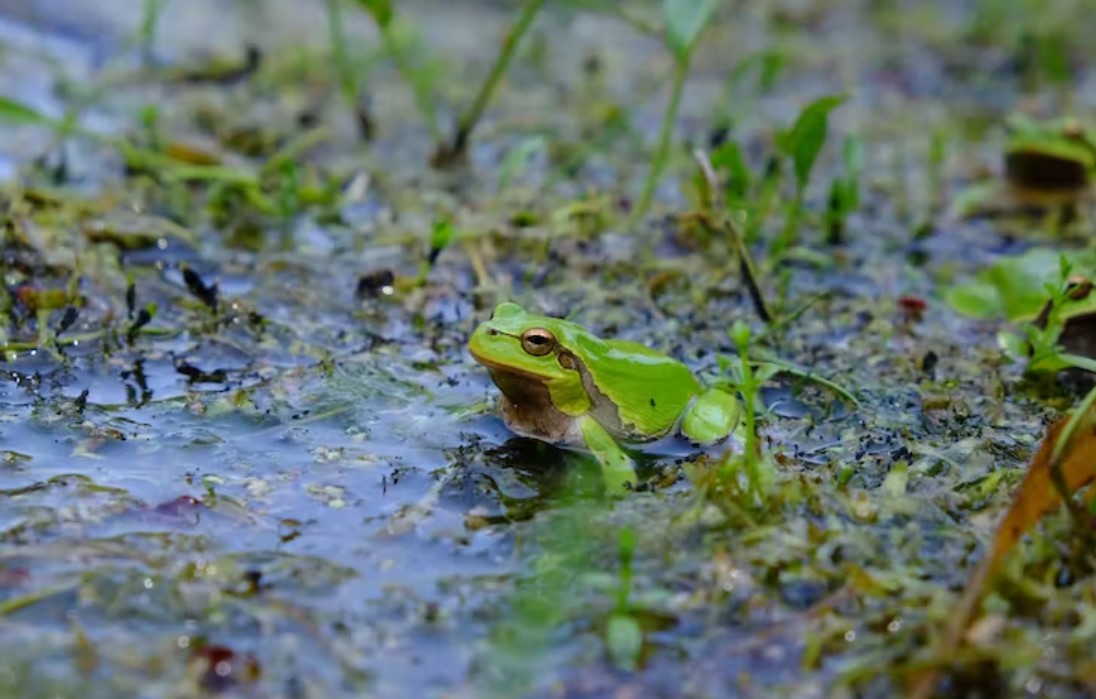The accident at reactor four of the Chernobyl Nuclear Power Plant in 1986 generated the largest release of radioactive material into the environment in human history. The impact of the acute exposure to high doses of radiation was severe for the environment and the human population. But more than three decades after the accident, Chernobyl has become one of the largest nature reserves in Europe. A diverse range of endangered species finds refuge there today, including bears, wolves, and lynxes.
Radiation can damage the genetic material of living organisms and generate undesirable mutations. However, one of the most interesting research topics in Chernobyl is trying to detect if some species are actually adapting to live with radiation. As with other pollutants, radiation could be a very strong selective factor, favouring organisms with mechanisms that increase their survival in areas contaminated with radioactive substances.
Melanin protection against radiation
Our work in Chernobyl started in 2016. That year, close to the damaged nuclear reactor, we detected several Eastern tree frogs (Hyla orientalis) with an unusual black tint. The species normally has a bright green dorsal coloration, although occasional darker individuals can be found.
Melanin is responsible for the dark colour of many organisms. What is less known is that this class of pigments can also reduce the negative effects of ultraviolet radiation. And its protective role can extend to ionising radiation too, as it has been shown with fungi. Melanin absorbs and dissipates part of the radiation energy. In addition, it can scavenge and neutralise ionised molecules inside the cell, such as reactive oxygen species. These actions make it less likely that individuals exposed to radiation will go on to suffer cell damage and increase their survival chances.
The colour of Chernobyl tree frogs
After detecting the first black frogs in 2016, we decided to study the role of melanin colouration in Chernobyl wildlife. Between 2017 and 2019 we examined in detail the colouration of Eastern tree frogs in different areas of northern Ukraine.
During those three years we analysed the dorsal skin colouration of more than 200 male frogs captured in 12 different breeding ponds. These localities were distributed along a wide gradient of radioactive contamination. They included some of the most radioactive areas on the planet, but also four sites outside the Chernobyl Exclusion Zone and with background radiation levels used as controls.
Our work reveals that Chernobyl tree frogs have a much darker colouration than frogs captured in control areas outside the zone. As we found out in 2016, some are pitch-black. This colouration is not related to the levels of radiation that frogs experience today and that we can measure in all individuals. The dark colouration is typical of frogs from within or near the most contaminated areas at the time of the accident.
Evolutionary responses in Chernobyl
The results of our study suggest that Chernobyl frogs could have undergone a process of rapid evolution in response to radiation. In this scenario, those frogs with darker colouration at the time of the accident, which normally represent a minority in their populations, would have been favoured by the protective action of melanin.
The dark frogs would have survived the radiation better and reproduced more successfully. More than ten generations of frogs have passed since the accident and a classic, although very fast, process of natural selection may explain why these dark frogs are now the dominant type for the species within the Chernobyl Exclusion Zone.
The study of the Chernobyl black frogs constitutes a first step to better understanding the protective role of melanin in environments affected by radioactive contamination. In addition, it opens the doors to promising applications in fields as diverse as nuclear waste management and space exploration.
We hope the current war in Ukraine will end soon and the international scientific community will be able to return to study, together with our Ukrainian colleagues, the fascinating evolutionary and rewilding processes of Chernobyl ecosystems.







Click here to change your cookie preferences